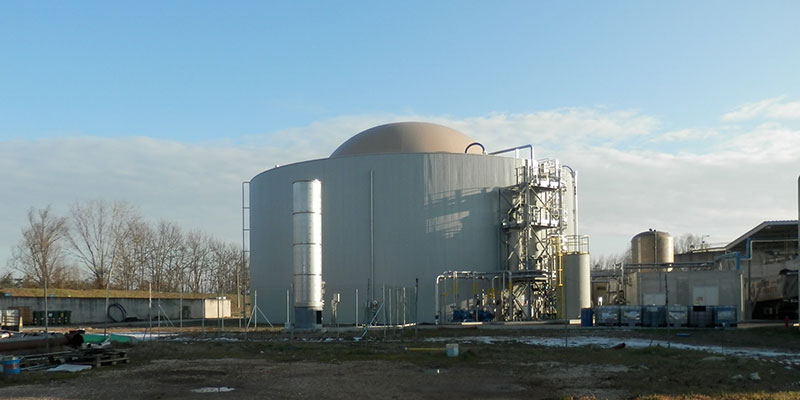
Wastewater streams that have high organic loads, such as from agriculture or livestock, can produce more biogas during digestion. That makes anaerobic digestion more economically attractive.
The benefits can be compelling, but several factors must be considered
Anaerobic digestion is a biological process that breaks down organic matter in the absence of oxygen, producing biogas and nutrient-rich sludge. Used in wastewater treatment, anaerobic digestion helps reduce the volume of sludge, stabilizes the solids, and produces valuable biogas. The solid matter that remains, called the digestate, is valuable for agriculture. These are obvious advantages, but anaerobic digestion is most appropriate in specific situations. Below are some factors to be considered when making such a decision.
Location, Location, Location
The site of an anaerobic digestion facility is important. For example, if it’s located near the source of organic waste, such as food processing plants, agricultural operations, or industrial facilities, that can reduce the cost.
If the facility is in an area with high energy costs, anaerobic digestion-created biogas can generate electricity or heat to offset those costs. Frequently, anaerobic digestion generates more than enough energy to power the treatment process and have excess to sell.
Wastewater streams with high organic loads can sometimes overwhelm municipal treatment systems. Anaerobic digestion can lower utility bills in those systems.
Quality and Quantity of Feedstock
Another key factor in deciding whether to use anaerobic digestion is the quality of the feedstock or waste.
Feedstock should be free of contaminants such as heavy metals and chemicals that can harm the digestion process.
Streams that have high organic loads, including food and agricultural waste, can produce more biogas during digestion. That makes the process more economically attractive for sites like food manufacturing and packing plants and livestock operations, as well as others such as paper pulp manufacturing.
The quantity of waste available also affects the economic viability of anaerobic digestion. But even where wastewater volume is insufficient, codigestion can tip the scales.
Codigestion is the practice of combining two or more organic waste streams to increase the quantity of feedstock, increasing the amount of biogas produced. Finding a good combination of feedstocks can be tricky, but high-sugar feedstocks or those rich in fat, oil, or grease are known to produce more biogas.
Government Incentives and Income from Biogas Can Help
Another factor that makes anaerobic digestion more economically attractive is government incentives, such as tax credits, grants, or subsidies. Some governments offer incentives for using renewable energy sources or for reducing greenhouse gas emissions. Incentives may also be available for specific types of organic waste streams or for the use of co-digestion.
In the United States, the Inflation Reduction Act provides investment tax credits (ITCs) to encourage anaerobic digestion adoption by offsetting the initial costs, but it is important to consider waste-to-energy systems that use AD-derived biogas to offset operational costs throughout the life of the plant.
Considering chemical, energy, and sludge disposal costs, traditional treatment methods typically cost about $5.67 per thousand gallons, but those costs shrink, disappear, or even go net positive with waste-to-energy treatment. Fluence estimates typical income after costs at +$0.39 per thousand gallons, and projects will typically see ROI in only two to five years, depending on organic loads and ITC contributions.
Taking the Long View
Anaerobic digestion may require significant initial capital expenditure (CAPEX), but it can also provide high lifetime savings. That makes anaerobic digestion appropriate for entities that can take the long view. It is important to consider newer infrastructure delivery modes that can lower CAPEX, making anaerobic digestion appropriate in more scenarios.
Fluence’s Water Management Services offers delivery modes that remove CAPEX and keep the experts involved in operations and maintenance. Fluence’s anaerobic digestion installations are lowering operating costs, improving wastewater, shrinking carbon footprints, and powering themselves across the world. Contact Fluence, and our experts will be happy to explore whether anaerobic digestion is an appropriate fit for your operation.
